
© Gene Schiavone. (Click image for larger version)
American Ballet Theatre
Giselle
★★★★✰
Washington, Kennedy Center Opera House
11, 14 February 2020
www.abt.org
www.kennedy-center.org
American Ballet Theatre’s brought its evergreen production of Giselle to the Kennedy Center Opera House for a seven-performance run in the second week of February, with seven casts in the leading roles. This staging of the 19th-century classic, created in 1998 by ABT’s artistic director Kevin McKenzie, is traditional and straightforward, with the choreography attributed to Jean Coralli, Jules Perrot and Marius Petipa. The costumes (by Anna Anni) and stage decorations (by Gianni Quaranta) are attractive and effective; yet the production shows its age. Both the décor and the wardrobe are in need of an update.
I saw two performances; each of them demonstrated why Giselle is still so popular even 180 years after the ballet’s premiere. No matter how many times you have seen it with each performance, there is a chance to discover something new; with each dancer, a possibility to witness a familiar role in a totally different light.
On opening night, ABT’s established principals, Hee Seo and Cory Stearns, were the leading couple.
Petite, willowy and supple, with beautiful features and dark eyes, Seo is destined to dance the title role. In the first act, as Giselle, a young peasant girl with a weak heart, she looked demure, naive, delicate and utterly shy. In her interactions with her perceived fiancé, Albrecht, she was so smitten by his attention – she could hardly look into his eyes. In her mime scenes and in her dancing, she projected an air of vulnerability and purity that made her heroine even more fragile.
Yet, unfortunately, her characterization was all in one key – she had the same facial expression, looking subdued and spectral, even lifeless, from the start, offering no visual and dramatic contrast between Act I and Act II in her performance. The scene in which Giselle admires the glamorous Bathilde and her luxurious red gown was one of the most effective theatrical moments in Seo’s portrayal of her heroine. But again, there was the same sense of hushed serenity and deep melancholy that permeated her entire body and expression, draining all the emotional richness from her interpretation. The mad scene in her rendition looked more spooky than heartbreaking, so the dramatic climax of the first act was somewhat missing.
In Act I, the performance of Cory Stearns in the role of Albrecht, a nobleman disguised as a commoner to win Giselle’s affection, was too academic to be believable and poignant. He is a tall and handsome dancer, with a fine classical line and excellent partnering skills; but his acting is dull; and his mime scenes looked rather forced and artificial.

© Gene Schiavone. (Click image for larger version)
Yet this Giselle took off after the intermission. In contrast with the realistic first act, in Act II, the story unfolds in a supernatural nocturnal world of Wilis – spirits of maidens who died brokenhearted before their wedding day, their love unreturned. Here the choreography conjures a visually striking balletic abstraction, with emphasis on pure dance; and both Seo and Stearns were sublime in it.
A feathery-light apparition, Seo’s Giselle was breathtaking, gliding on the stage with effortless abandon as if windswept. She seemed to be floating on air in a series of stunning overhead lifts, aided by Stearn’s exemplary partnering, their dancing graceful, well-articulated and infinitely poetic.
This performance was blessed with many notable performances from the supporting cast.
Roman Zhurbin was a terrific Hilarion, the village huntsman and a rejected suitor of Giselle. Infusing his acting with passion and fervor, he made his character and his plight look supremely dramatic. Watching his playing in the first act, from the moment he places a small bouquet of flowers on the steps of Giselle’s cottage as a sign of his devotion; to the opening scene of Act II, when he, on his knees, make a wooden cross to place on Giselle’s unmarked grave, you can feel all the heartbreak, pain, anger and frustration of unrequited love and devastating loss.
Nancy Raffa made a memorable turn as Berthe, Giselle’s perceptive mother. Her mime scene, in which she foretells her daughter’s future, with fatalism, acceptance and a sense of dread, was as genuine as it was poignant. And Devon Teuscher was compelling as a stern and vindictive Myrta, the Queen of Wilis. With her resolute posture and penetrating eyes, she projected a sense of menace – a vision to be feared and to be reckoned with, her dancing finely etched and powerful.
On Friday night, the performance was led by Isabella Boylston and Aran Bell in the main roles.
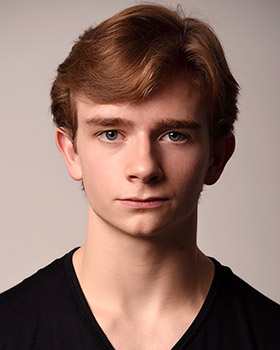
© Taylor Brandt. (Click image for larger version)
There was so much life in Bell’s characterization of Albrecht. His every gesture made perfect dramatic sense, his movements natural and sincere. His face was an open book, registering all the feelings, doubts and impulses of his hero.
In Bell’s interpretation, Albrecht was a good-hearted young man, who, for the first time in his life, had experienced a true feeling of love. And he was so overwhelmed, even hypnotized, by this new flood of emotions that he simply forgot (or wanted to forget) about everything else, including his aristocratic status and his royal fiancée, Bathilde. He sincerely desired to be with Giselle; and when his unintended actions led to her death, his grieving was so intense you felt that he was ready – and willing – to die with her.
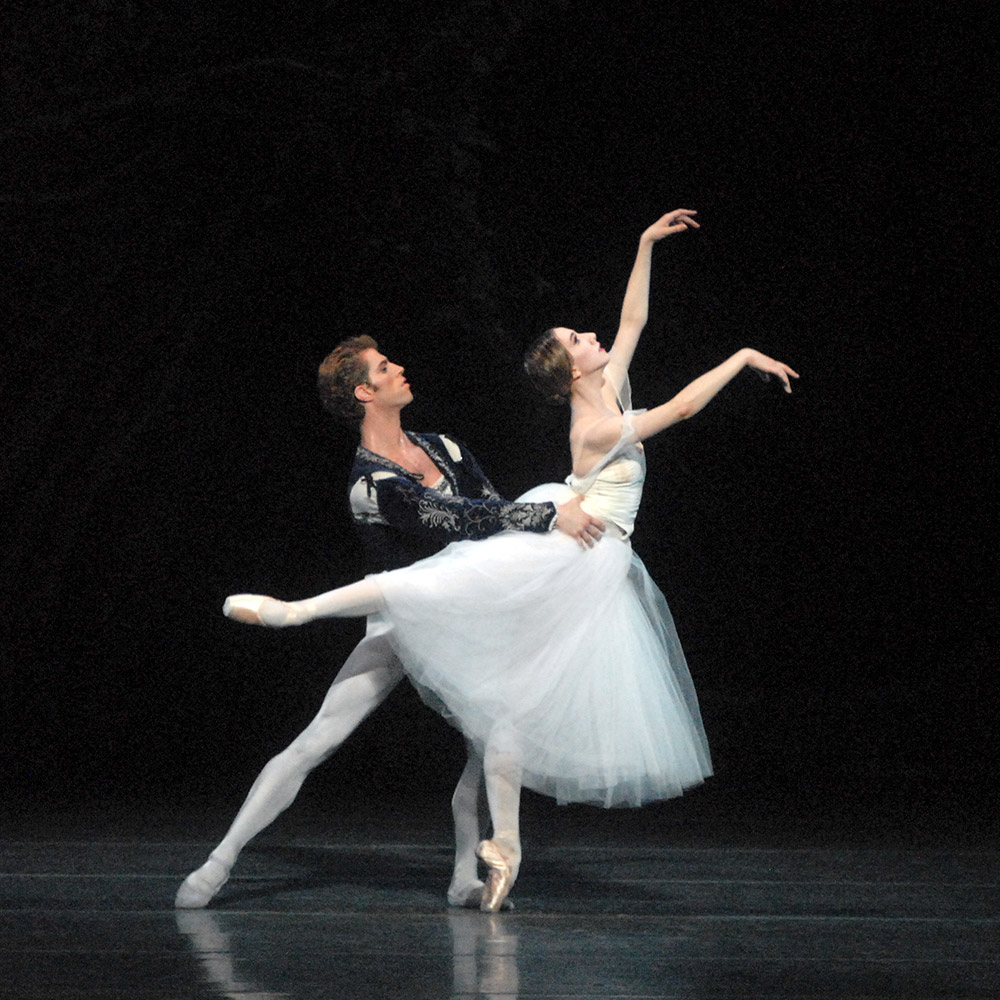
© MIRA. (Click image for larger version)
It was impossible not to fall in love with Isabella Boylston’s Giselle. She was charming and full of life, her demeanour uninhibited and her dancing sparkling with joy. That’s why her sudden transformation from a lively girl to an eerie ghost was all the more visually and emotionally impactful. Her mad scene was wrenching in its intensity and dramatic effect. And Bell’s Albrecht looked so devastated and remorseful – you knew his suffering was real.
In this performance, Giselle and Albrecht continued their love story in the abstract second act. With a newfound strength, Boylston’s Giselle was shielding her loved one from the revengeful Myrta (Katherine Williams). Bell’s Albrecht, in turn, was holding Giselle in his hands as if she was his lifeline, looking at her with utmost tenderness; his dancing at the command of Myrta combined mighty strength and utter desperation.
There was an engaging performance of the Peasant Pas de Deux by Cassandra Trenary and Tyler Maloney in the first act; and in the second act, a well-rehearsed chorus of Wilis flooded the stage with a cornucopia of arabesques, creating a magic all their own. In all, it was Giselle to remember.







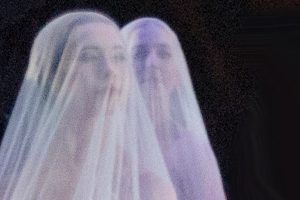

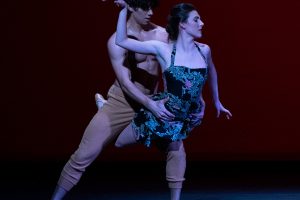
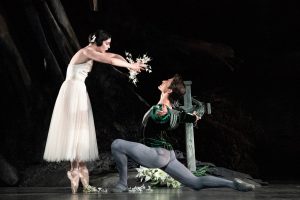
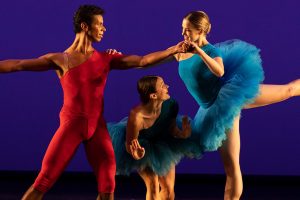
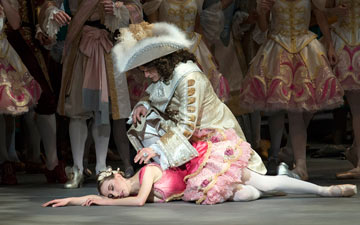
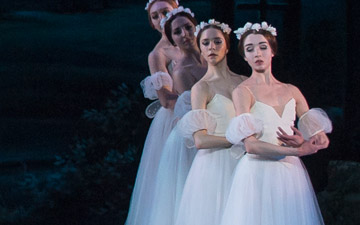
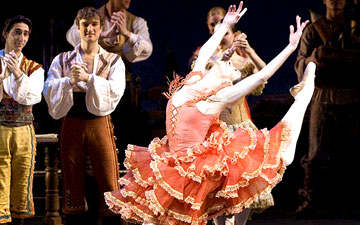
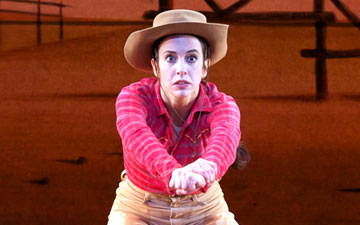
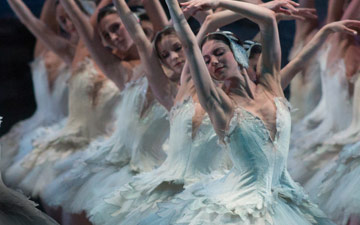
You must be logged in to post a comment.